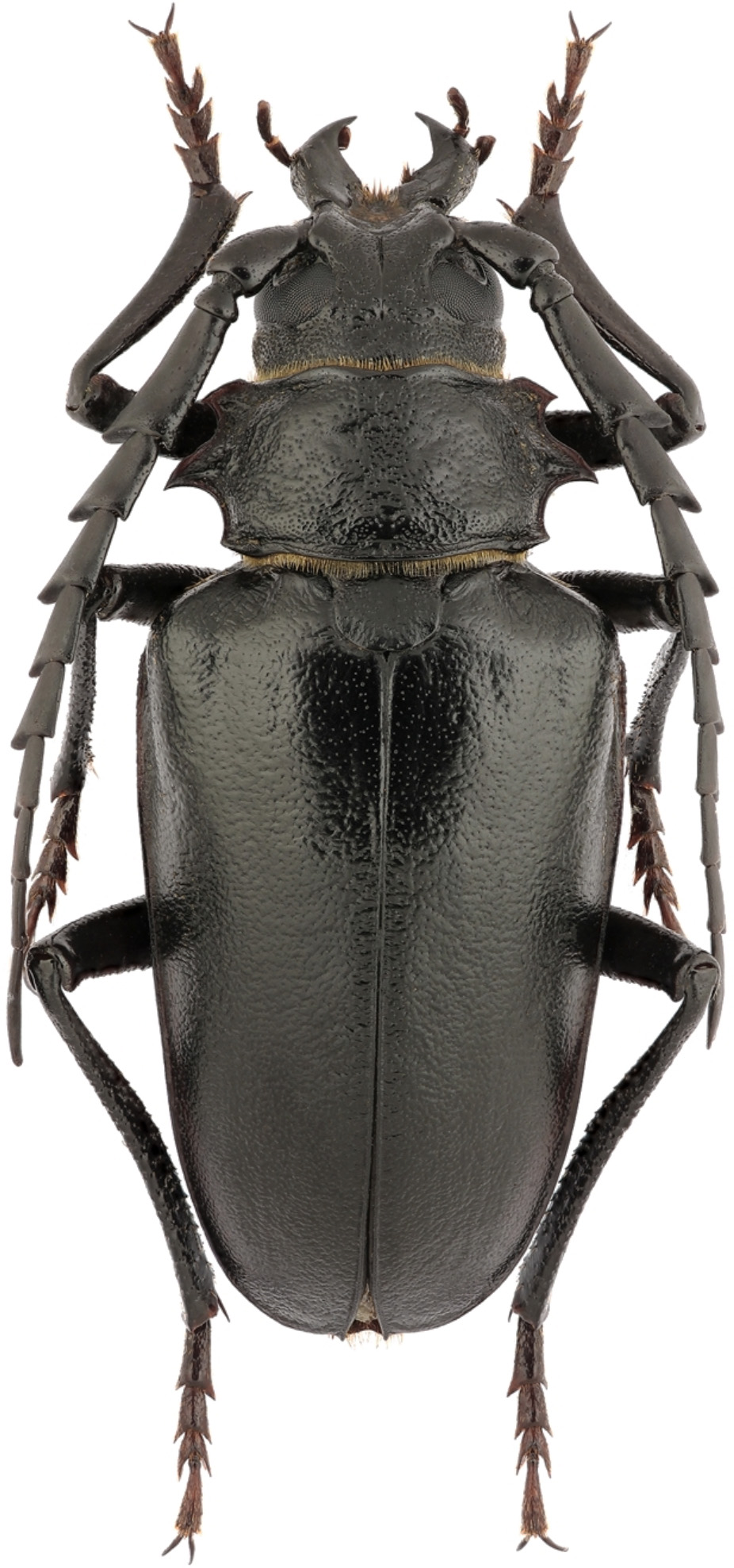Mesoprionus angustatus, a species distributed in Central Asia (Afghanistan, Iran, Kazakhstan, Kyrgyzstan, Tajikistan, Turkmenistan, Uzbekistan),
has been described from Fergana Valley (Uzbekistan) as Prionus angustatus by Vassili Evgrafovitch Jakovlev in 1887 [▽].
M. angustatus larvae develop in/on the roots of desert trees and shrubs (Haloxylon, Populus pruinosa, Calligonum etc.).
Females lay eggs in the sand or in the bark crevices at the roots of host trees, and the living roots are also colonized. Late instars larvae are able to move in the soil and feed on roots.
Life-cycle up to 4 years. The beetle exit holes are visible on the host trees trunks above the soil level, therefore pupation occurs in the wood. All known specimens were collected
in biotopes with loose sands. Males (but also females) fly in the evening and in the first half of the night from the second half of June to August [✧].
| Body length: | ♂♂ 25-45 mm / ♀♀ 30-50 mm |
| Life cycle: | 3-4 years |
| Adults in: | June - August |
| Host plant: | roots of desert trees and shrubs (Haloxylon, Populus pruinosa, Calligonum etc.) |
| Distribution: | Afghanistan, Iran, Kazakhstan, Kyrgyzstan, Tajikistan, Turkmenistan, Uzbekistan |
The depicted beetle was collected in Kazakhstan.
[▽]
Jakovlev V.E.:
Révision des espèces du genre Prionus de la faune de la Russie.
Horae Societatis Entomologicae Rossicae, St. Petersbourg 21 (3-4): 321-340, 1887.
[download  ]
]
[✧]
Danilevsky M.L.:
Longicorn beetles (Coleoptera, Cerambycoidea) of Russia and adjacent countries. Part 1.
Higher School Consulting, Moscow, 550pp [pages 45-46], 2014.
[download  ]
]


